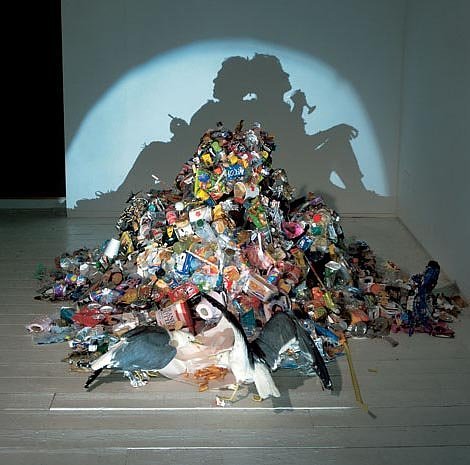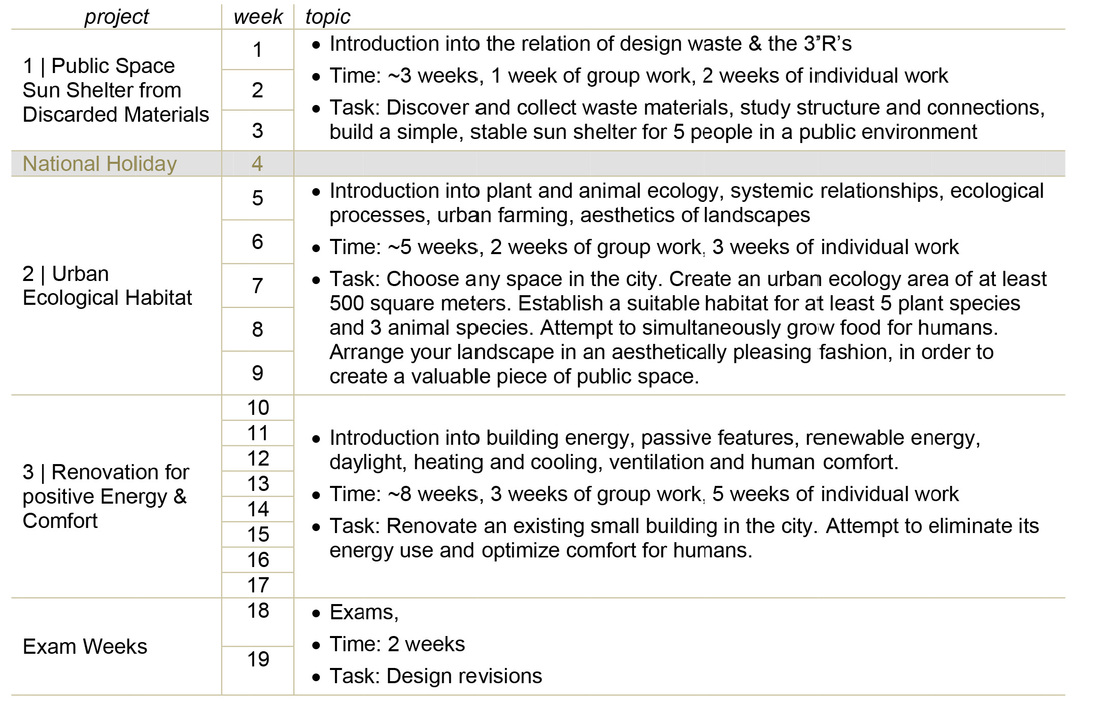Bachelor Core Studio Projects - Environmental Design
Below are examples of BA core studio projects in environmental design we taught. We have led studios for 2nd-4th year bachelor students. Recently it's mostly 3rd year, with the semester topic of 'Creative Sustainability'. Semesters last about 16 weeks. We usually run 2-3 projects per semester, interspersed with quick exercises, field trips, lectures, reading, etc. We often change our projects from year to year, usually in relation to our own improvement, practice, research or current market trends.
1. Course description
In this design studio course, students are introduced to the issues of sustainability and the search for socially and environmentally creative design solutions in the built environment. Students get familiar with issues of waste, energy, resources, etc. and how these aspects stand in relation to designed environments and the sustainability of a place and its users. The course aims to build a designer’s awareness about environmental and social impact, life-cycle questions, habitat requirements, natural processes, urbanization, globalization, place-specifity, and other sustainability issues, as well as what significant role design plays in these matters. Over the course of the semester, the student also becomes familiar with the typical environmental design project processes, starting from site and context documentation, over context analysis and evaluation, goal setting, programming, concept creation, structure, materialization, modeling, fit-out, etc. Furthermore, the course will introduce relevant professional tools, methods, standards, principles, practices, and so forth, which support the creation of high-quality environments.
2. Schedule (example)
In this design studio course, students are introduced to the issues of sustainability and the search for socially and environmentally creative design solutions in the built environment. Students get familiar with issues of waste, energy, resources, etc. and how these aspects stand in relation to designed environments and the sustainability of a place and its users. The course aims to build a designer’s awareness about environmental and social impact, life-cycle questions, habitat requirements, natural processes, urbanization, globalization, place-specifity, and other sustainability issues, as well as what significant role design plays in these matters. Over the course of the semester, the student also becomes familiar with the typical environmental design project processes, starting from site and context documentation, over context analysis and evaluation, goal setting, programming, concept creation, structure, materialization, modeling, fit-out, etc. Furthermore, the course will introduce relevant professional tools, methods, standards, principles, practices, and so forth, which support the creation of high-quality environments.
2. Schedule (example)
3. Textbooks/ Resources
Students are invited to read the following books. Reading and self-study are strongly encouraged.
Students are invited to read the following books. Reading and self-study are strongly encouraged.
- Cradle to Cradle: Remaking the Way We Make Things, William McDonough and Michael Braungart, North Point Press, New York, 2002. 从摇篮到摇篮 :循环经济设计之探索, 威廉·麦克唐纳 迈克尔·布朗嘉特
- Biomimicry: Innovation Inspired by Nature, Benyus, J.M., Harper Perennial, New York, 1997
- Ecological Design, Sim van der Ryn, Stuart Cowan, Island Press, 1995
- Landscape Ecology Principles in Landscape Architecture and Land-Use Planning, Wenche E. Dramstad, James D. Olson, and Richard T. T. Forman, Harvard University GSD, Island Press, 1996
Example studio projects:
|
01.
02. 03. |
Recycling in environment design
True urban ecology |
(2012)
(2012) |
© LifeQualityEnvironments | 2010-2013



